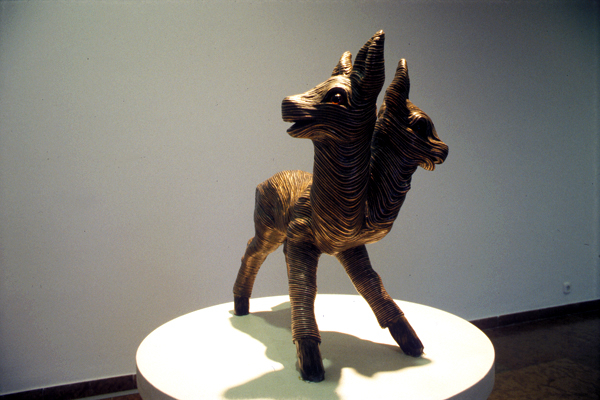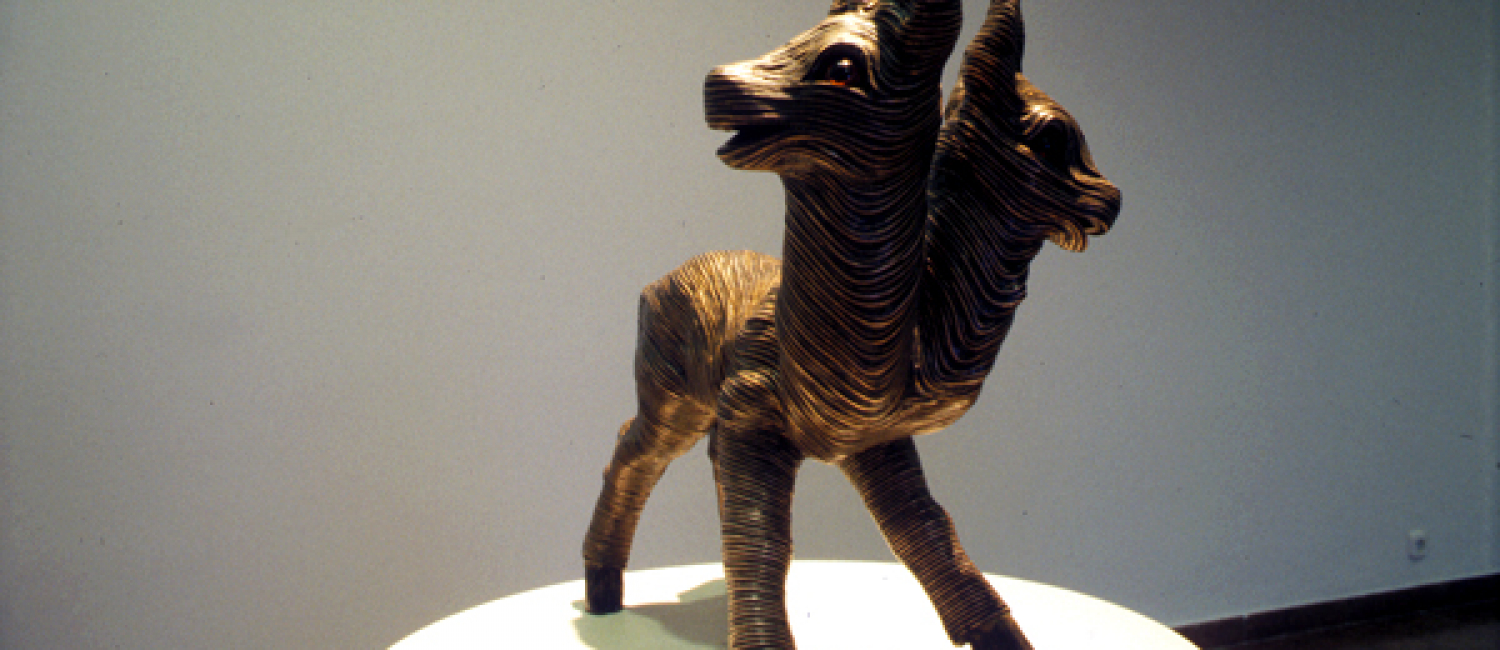Budapest is probably the last scene of this monumental travelling exhibition, organised by MonteVideo/TBA - Netherlands Media Art Institute. The Museum of Contemporary Art created special rooms for the eleven Dutch and an American artists, who are trying to interpret the nature of time using the latest technology in their works.
As a central installation in the exhibition there is Peter Boger's Heaven. In a small, completely empty, whitewashed apartment, we encounter the remnants of the life. On 17 black and white monitors we catch 17 glimpses of movement. Maybe the catastrophic view is appeased in Borealis by Steina Vasulka. It consists of four vertically placed projection screens, on which, by two video projectors and two sets of mirrors, four images are displayed. The images show seascapes, filmed by the artist.
Bert Schutter's Les Baigneuses ironically alludes to the famous painting by Renoir. You walk down the passageway, lured by the sound of girlish laughter. By the time you reach the screen, all you see is an image of the edge of a pond. In Bill Spinhoven's I/Eye the visitor never escapes the gaze of the work. Another of Spinhoven's work The Logic of Life is a huge machine remotely resembling a film projector. As soon as the ambient light goes down, the machine's light shines out. The machine runs crazily, forward and backward at different times and speeds. Viewers are not sure what they're seeing. Fiona Tan shares his fascination for mechanics. Her piece Witness consists of a mechanical clockwork in which the weights have been replaced by five monitors of various dimensions, each one representing a time element. This aspect comes into view in another of her works Atlas of the Interior. While browsing the Internet, she came across the images of 1700 deep frozen slices of a human body. The body is reconstructed on 2 monitors, while images of the slices are projected onto the visitor's white coat.
The Skipping Mind by Bea de Visser consists of two parts. She painted 25 portraits of a women based on photographs, digitised the paintings, and then used a morphing program to make the images move. Face Shopping by A. P. Komen shows a very different rendering of the human face. On four adjacent projection screens, 4 dose-up of young women are shown. Erratically emotional are also the Re-Animations of Christiaan Zwanikken, though in a very different way. In the 5 sense-installation, the remains of birds and other animals are re-animated through the use of microprocessors. Kees Aafjes Credit Art is a pastiche of a credit card machine. The visitor is invited to enter his card in order to obtain a work of art. In the monitor of the machine, however, their "flexible friend (card)" is shown being cut in half. Foundling encourages visitors to touch it. If you pet the deer, it calls out in animated voices and eagerly seeks more caresses. Maracaibo, Ships that pass in the night by Pieter Baan Müller is comprised of three monitors showing strict forms in green, grey and black, and red in a manner suggestive of the abstract, geometric tradition of Mondrian. Through effects of sound, images, the simple forms reveal ships sailing across a nighttime sea. In O.T.S. by Jaap de Jonge displays 28 crystal balls in an octagonal showcase. Video works by other Dutch artists are shown through each ball. De Jonge has abandoned his stance as an individual artist by creating a common space, or a medium, in which other people can express themselves. Boris Gerrets' video installation Time / Piece makes use of a strobe effect. A small monitor is installed in a bronze stand like a sundial or a world globe. Images rotate 360 degrees above the orbit, showing moving people, cars, and urban panoramas in strange, unreal ways.

